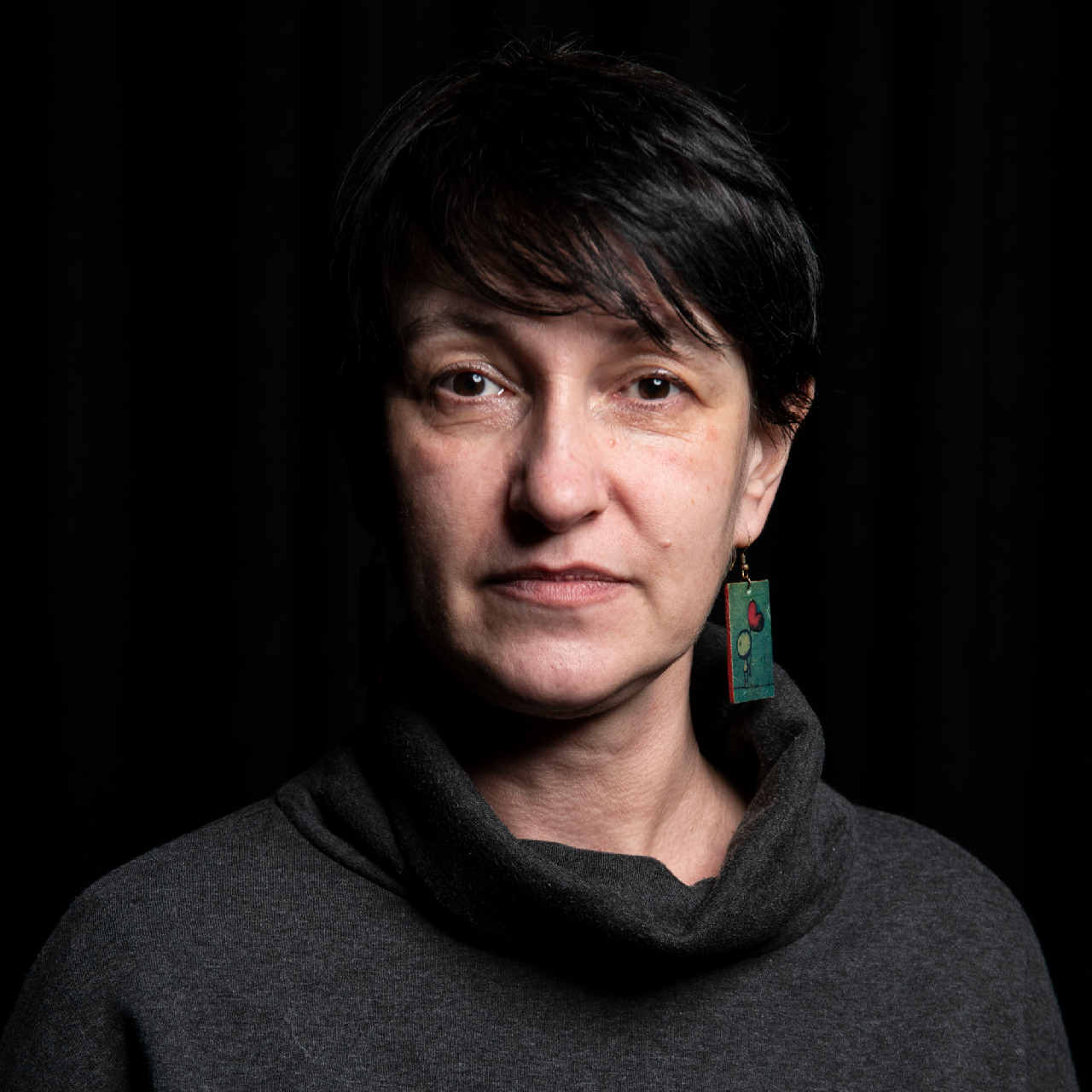Just waiting to leave
Kosovo's last Croats contemplate the end of their centuries-old community.
Not so long ago, some 30 years back, about 9,000 ethnic Croats lived in Kosovo, mostly in the towns of Janjevo and Letnica. Today fewer than 200 remain, most of whom are elderly. The few young people who remain are just waiting for their chance to leave.
Among those who await the right moment to leave are three young men, all under the age of 20, whom I met in the courtyard of the Church of Saint Nicholas during one of many visits to Janjevo with K2.0’s photographer over the last few months. Like most people we spoke to in Janjevo and Letnica, the young men don’t want us to mention their names publicly or photograph them, saying they’d had bad experiences with the media in the past.
When asked what they do and how they live here, they answer almost in unison: “Wasting time!”
They said that they hope to move to Croatia soon and that they still don’t have Croatian documents and must, like all other Kosovars, wait for a visa. They hope to be able to stay in Croatia, where they have family.
“We know it’s going to be tough. Croatia isn’t ideal either,” one of them said, adding that they would start as seasonal workers, probably somewhere on the seaside. How they’d get along and what they’d do after the season, they don’t know yet.
“There is no reason for us to remain here. There’s nothing here,” another said while the others nod in agreement.
There’s just one daily bus from Janjevo to Prishtina. Most of their peers have already left and the three of them have barely anyone to socialize with. They said that if they stay, they would likely never have a chance to meet girls, get married or have a family.
The three of them spent last winter and spring 2022 counting down the days until their final departure.
Janjevo
Janjevo is a semi-deserted town at the end of the road, some 20 kilometers from Prishtina. Houses, a church and a mosque sit between the mountains, squeezed into narrow streets, some of which are still paved in cobblestone. It’s difficult to find a house in which anyone lives and which isn’t damaged. Some were abandoned so long ago that trees grow out from inside or have animals as their only inhabitants, including stray dogs who’ve found shelter, or domestic animals looked after by locals.
The center of the town consists of a small clinic, a local community building, a few coffee shops and a soup kitchen, likely the most visited place in Janjevo, where one meal a day is given out to around 126 people of all faiths and nations.

Occasionally, donkeys and horses burdened by loads pass through the deserted streets, carrying wood from the nearby forests. Wood is the main source of heating in Janjevo, and often the only source of income for many residents. In the center there is also a small branch of a plastics processing factory in which some locals work.
Janjevo used to be known for its cheese, sujuk (cured sausage) and for local wine, which is almost impossible to find these days. Nikola, one of the last small producers, and one of the roughly 150 Croats here, says that he too will soon halt production. Of the many family members who used to live in Janjevo, only he, his wife and one son remain.
During the pandemic his wife contracted Covid and she hasn’t fully recovered since. Nikola says that he is getting older, it is becoming increasingly difficult to work in the fields and their son can’t do it all on his own. They decided that as of next year they will stop producing sujuk and cheese, sell their livestock and live on what they have left — savings, pensions and assistance from their family in Croatia. They say that there is no other way. They have trouble placing and selling cheese and sujuk in the market and there’s no way to hire someone to help them in the fields.
Nevertheless, the Croats of Janjevo are proud of their past and make sure to mention that their town gave birth to a gold-medal winning Olympian, Josip Glasnović, who was born in Janjevo but whose first visit to Kosovo as an adult was last November.
The quiet atmosphere in town changes only on Fridays, when a small market opens up on the main square and people arrive from surrounding villages.
Until the beginning of the 1990s Janjevo and its surroundings had around 750 registered businesses. Throughout history, Janjevo was known for its silver and lead mines, as well as craftsmen, which is why it was a trade center of this part of Kosovo. In the 20th century, metal and plastic processing factories opened up. Locals said that today fewer than 10 registered businesses remain.
From Dubrovnik Street, in the city center, we climbed up to Saint Nicholas Church. From the church square, you can see a large part of the town and it is only there that a visitor can get a sense of a place that used to be rich and beautiful. Large houses with courtyards and old gates. The mountains that appear menacing when observed from the town center, from here seem tame and give a feeling of protection.
We are greeted in the church by Don Matej Palić, a Janjevac who, after studies outside Kosovo, returned and served as a priest in Letnica and then in Janjevo. Most of his family members have left the area, so Don Mateo, as everyone calls him, talks to us about his family home that is falling apart. He greeted us in a room filled with books amidst which a television sat playing HRT, Croatia’s public broadcaster. Don Mateo tells us about how he taught himself Albanian and how he holds mass in both languages. “I just asked Albanians who come to church to help me out so that I wouldn’t pronounce something wrong and say inappropriate things during the worship,” he said.
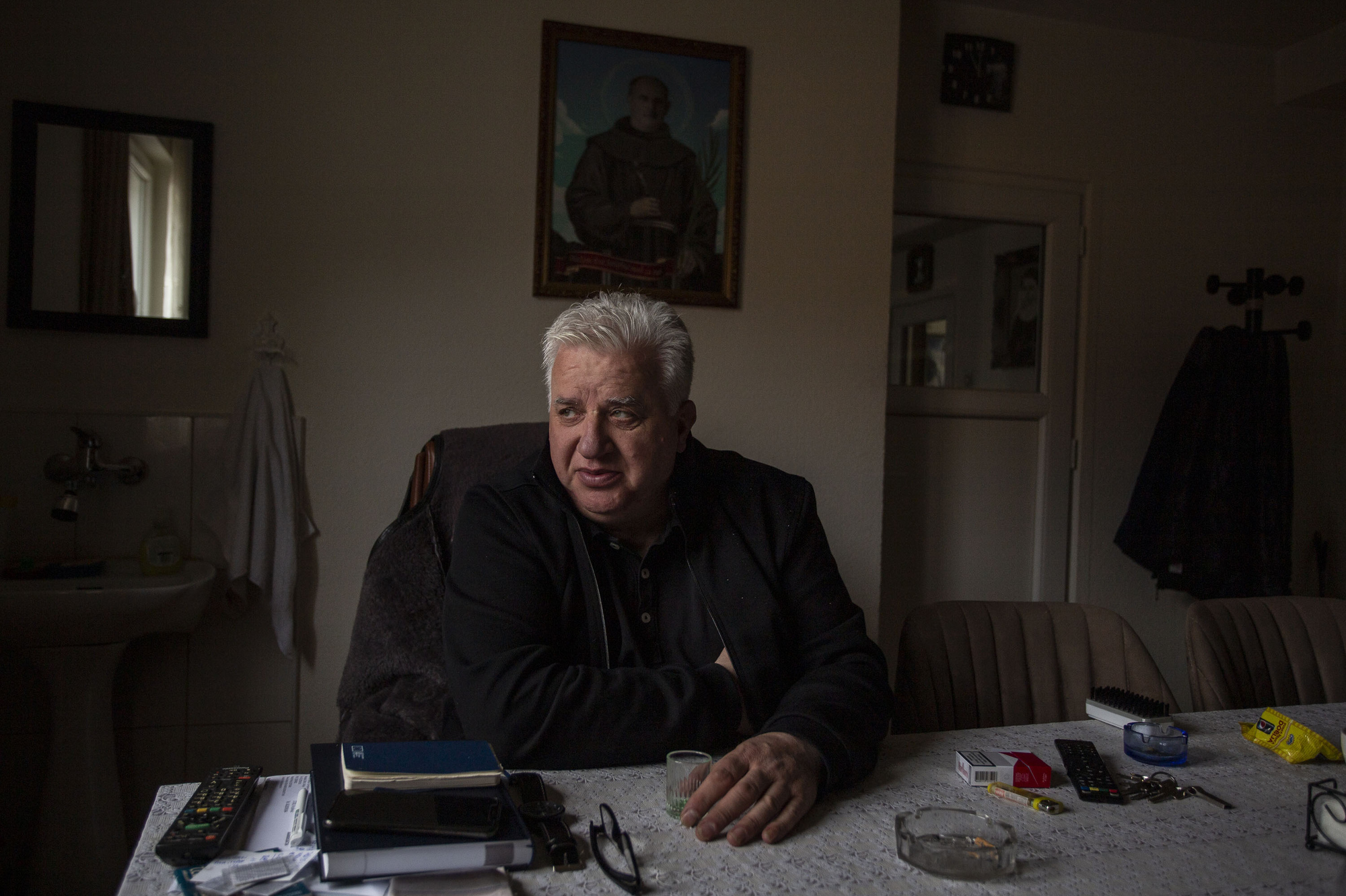
Aware of the fact that Janjevo’s Croat children are learning the Serbian standard language in school, Don Mateo organizes additional classes at church to teach them the Croatian standard.
Prominently placed among the books is a black and white photo of three young men with Mother Teresa. “Yes, that’s me, a long time ago,” said Don Mateo, mentioning that Mother Teresa visited Janjevo once.
Don Mateo speaks about Janjevo, its traditions, culture and nature, with deep love. But with the same amount of sadness he talked about the future and how people are leaving. “There is no future here, I’m afraid,” he said.
He talks to us about the sense of safety that has been destroyed due to a series of home burglaries, which have left locals living in fear for months. In November, local Croats spoke to Croatian Prime Minister Andrej Plenković about their problems when he visited Kosovo. They told him and other officials that were with him that everyone would leave Janjevo if no one reacted. After this, five people were arrested and police patrols were increased.
Along with the local imam, Don Mateo cares for the entire town of Janjevo. “We used to have a council of elders, and today there are only two of us,” Don Mateo said, adding that the two of them are trying to solve problems in contact with institutions, but also address quarrels and help people in need in any way they can.
In the church yard, we meet two brothers from Janjevo. One lives in Serbia, the other in Croatia, and their parents still live in Janjevo, the place they call home. “Janjevo was once like Paris,” one of the brothers said as we stood in the church’s yard. “The streets were clean, the people rich, everything smelled nice. Today hardly anything remains the same.”
Lulzim Gashi, a registrar, has a similarly negative view. He says that, as of recently, his job mostly involves helping people get their documents for departure to other countries or to the next world. There haven’t been any newborns or weddings for a while in Janjevo. He says that 4,000 people used to live in the town and surrounding areas. Today, only around 1,600 remain, but there are fewer every day.
People from the diaspora come to visit less and less often. “The war took its toll. It’s sad when roots are cut off. The tree collapses by itself,” Don Matej said gloomily.
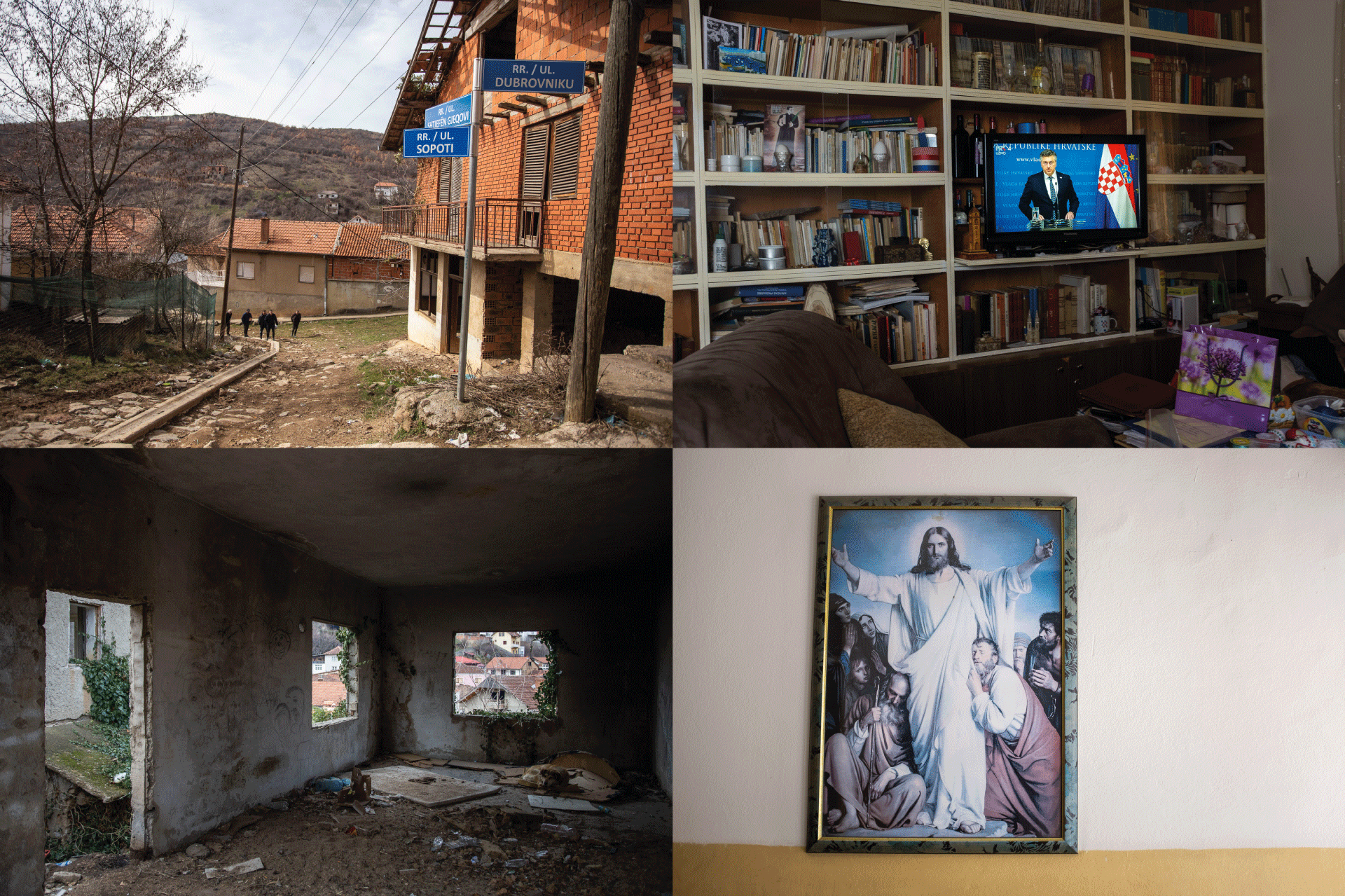
Last year, for the first time, a detachment from Croatia joined KFOR, the NATO-led peacekeeping forces in Kosovo. Soldiers visited both Janjevo and Letnica and some locals later said they wished the soldiers had been stationed with Kosovo’s Croats, saying it would make them feel safer and enliven the place.
The remaining Croats are preserving parts of Kosovo’s cultural heritage, including their dialect, their culture and a church bell believed to date from 1368.
In one of the town’s five coffee shops, we met two Croats who have stayed in Kosovo, though their families left long ago. One holds documents from three states, the other only has Kosovar documents. “I don’t go anywhere,” he said and added that he simply didn’t want to spend his time on complicated procedures to obtain documents. “I have an ID and that’s enough for me to live here.” Both tell us they don’t expect any changes.
Don Mateo nevertheless still hopes. He talks with locals, no matter their ethnicity, trying to persuade them to become active in the economy and tourism. He tries to convince people to start talking about environmental issues and start businesses. When asked whether he fears what the future may hold, he just said, “I’m here.”
Letnica
In southeastern Kosovo, 755 meters above sea level, sits Letnica. Janjevo’s Croats, but also people of other religions from other cities in Kosovo and North Macedonia, come here for two reasons: pilgrimage to the old shrine of Our Lady of Letnica and the Dubrovnik restaurant. Apart from the church and the restaurant, the town also has a small shop and numerous empty homes and abandoned buildings.
There is no clinic and no coffee shop. The bus doesn’t go to this place at the end of the road. The silence is broken only by the occasional noise of cows that walk freely through the city. Locals tell us that they were isolated to the extent that not even Covid reached them, and that only one person fell ill throughout the pandemic.
Six days a week, around 15 older Croats come to the restaurant to get a daily meal. The oldest are sisters Petra and Marija, one born in 1933, the other in 1938. We met them while they were resting in chairs in front of the restaurant during one of the first sunny days in March. Mostly, they complain. About the weather, food, doctors, and other elderly who come to the restaurant for meals.
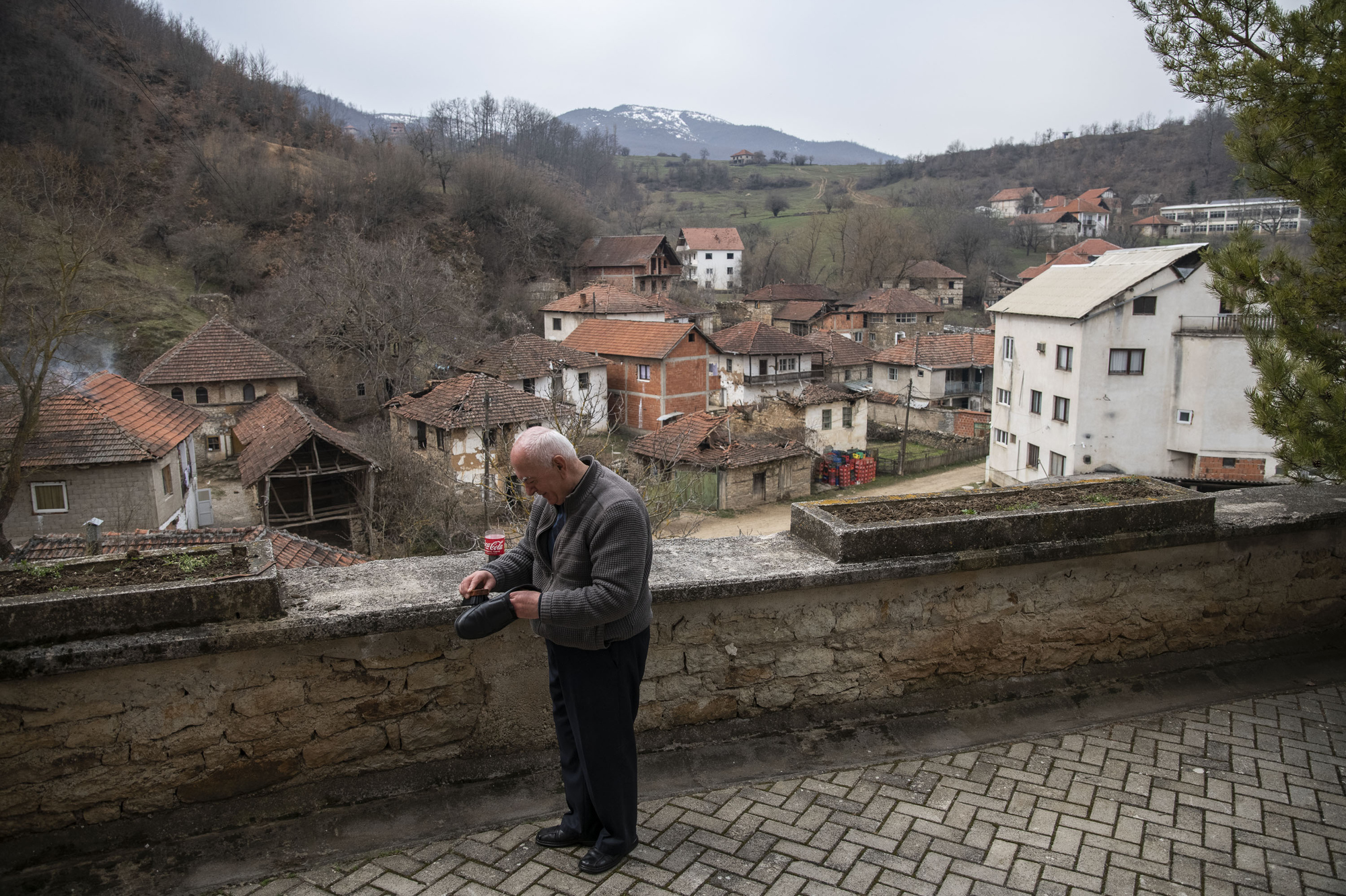
Josefina and Mile Dokić, the restaurant’s owners, both in their fifties, are among the younger people in town. They say they have been providing meals for some 10 years with the help of a Croatian fund that assists Croats in the diaspora. In the first year there were around 50 people who would come. They couple said that they know that soon there will be no one left.
The restaurant is a meeting place for the elderly of Letnica who, when they come for food, hang around, wait for others, chat a bit, and then all return to their solitude. Their children left them a long time ago, and now send money and come for visits a few times a year.
Paulina is the last person who wears the traditional local dress. We beg her to show us the costumes in her possession. “I only have this one, a normal one,” she said before bringing a white woolen robe, apron, socks, and other pieces of the dress from her house. “I have a bunch of them but they are in the other room, but I locked it and can’t find the key now,” she said.
However, when we met her in March, she was dressed in black after her only son, who lived with her in Letnica, died. More than a month has passed since his death and Paulina still cries while talking about him. She says that she didn’t want to leave Letnica before or after he died. “This is where Mother is, I can’t go far from her,” she said, pointing in the direction of the church. “While she is here, so am I.”
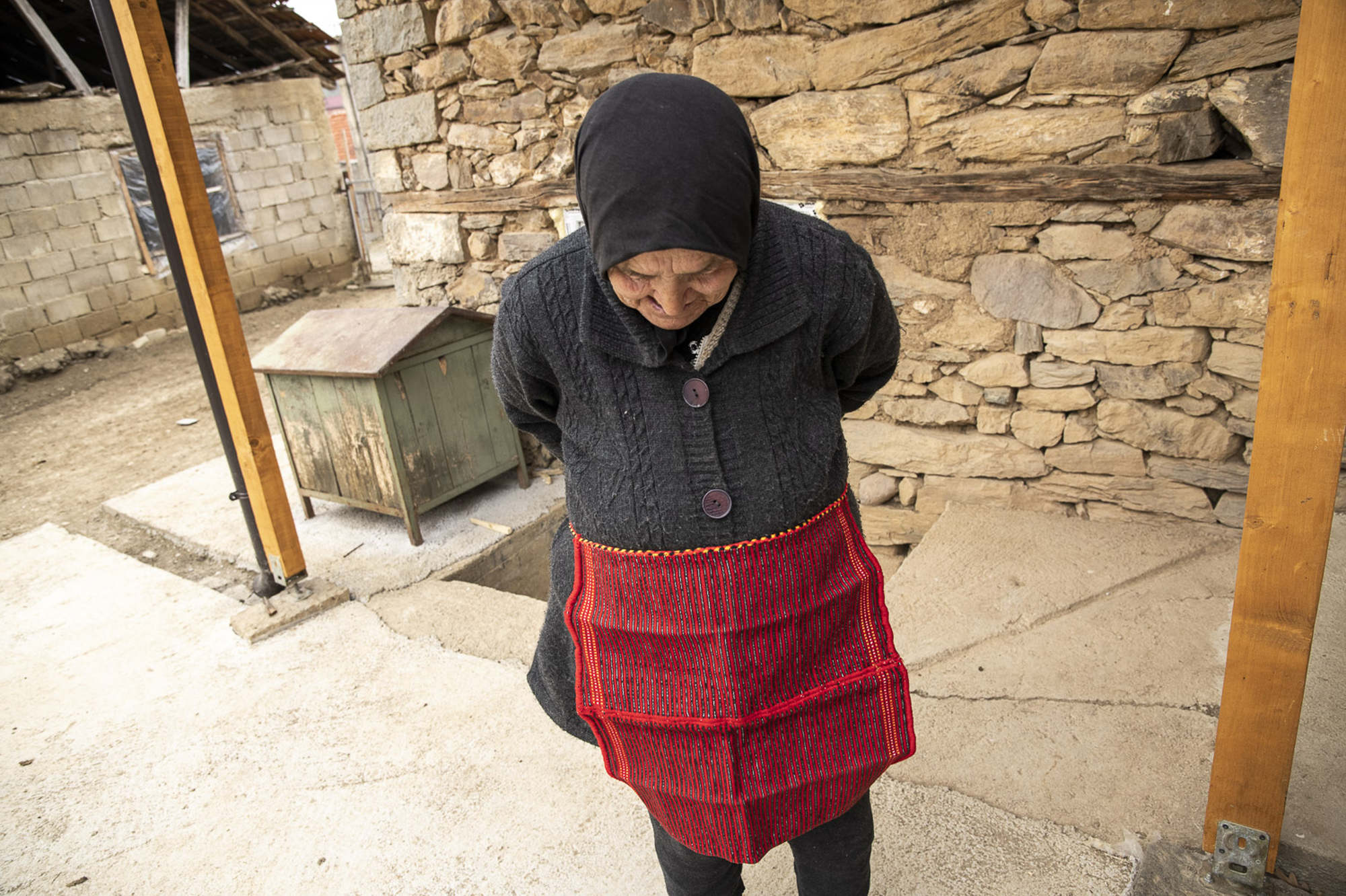
Paulina, as well as other older locals, carries around her neck a small silver medallion with the image of the Virgin Mary hanging on a red thread. A Statue of Mary has been kept in the local church for centuries. Father Marjan Demaj, originally from the surrounding villages, holds mass every day in both Albanian and Croatian. Both services are held in an almost empty church, except for when pilgrims arrive in the summer.
Legend has it that the statue of the Virgin Mary in this church, which many refer to as the Black Madonna, has miraculous powers. Certain legends posit that some people have seen tears on her face. For centuries, women of all religions and ethnicities have prayed here with the hope of becoming pregnant or for their children to be healed from sickness. Apart from the Black Madonna, the walls are painted with figures of dark-skinned female angels. The origins of the statue and the paintings on the walls are not known.
This place is important to Catholics worldwide because Agnes Gonxha Bojaxhiu, or Mother Teresa as she’s more widely known, was ordained here after years of visiting from Macedonia on pilgrimage with her parents. The Madonna of Letnica statue is believed to have been brought to Letnica from Skopje at least 400 years ago.
The believers who come to Letnica now often also walk the Trail of Mother Teresa, a winding forest path between Skopje and Letnica, parts of which some believers take barefoot.
The church was built in 1866 but, according to Demaj, it has been demolished and rebuilt several times. In 1928 it was rebuilt following the designs of the cathedral in Sarajevo.
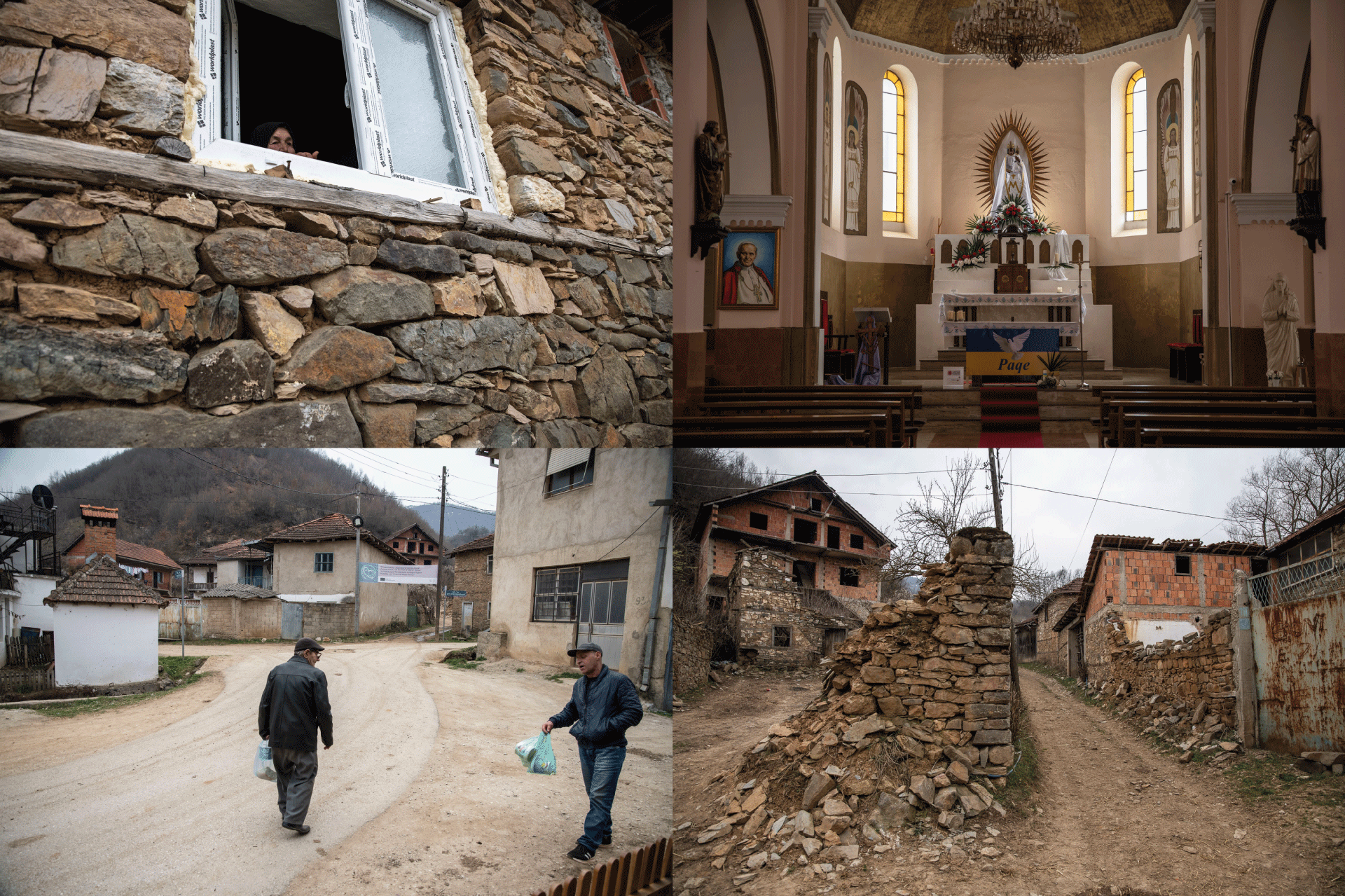
Father Marjan and a few nuns offer help to the elderly in Letnica. The sisters make regular visits and they are equipped to provide basic medical care or take people to the doctor in Viti, a nearby town. A doctor visits Letnica once a week.
The church has several rooms where pilgrims stay in the summer. The priest says that he is trying to persuade the diaspora to come more often, to think about returning and rebuilding their houses. “Whoever wants, we allow them to sleep in rooms next to the church instead of in hotels outside Letnica,” he said. “That’s how they get a feel for life here and they can decide whether to come back.” So far there have been no returnees, and only about 200 people live in the village.
“The people who live here are mostly thinking of leaving,” Josefina said as she prepared a meal at the restaurant. The two of them are staying but their children have left a long time ago, starting their own lives far away from Kosovo. The restaurant has been a family business for generations, but they don’t know if there will be anyone to leave it to.
The past
Historical records show that roughly 800 years ago Catholics workers and miners came to Kosovo from Dubrovnik and Herzegovina. Some settled in the area of Janjevo, 20 kilometers from today’s Prishtina, others in the areas around Letnica, close to the current border with North Macedonia. Today their descendents in these towns identify as ethnic Croats. They lived continuously in these parts until the beginning of the 1990s and the dissolution of Yugoslavia.
The mass departure of Kosovo’s Croats started up when war broke out in Croatia. In 1991 Vojislav Šešelj, the ultranationalist politician from Serbia, came to the area around Letnica and proclaimed at a public event that Croats should be deported from Serbia (at that point, Kosovo was still one of Serbia’s provinces) “to their Croatia.” Months of tension and fear ensued and there were multiple incidents where Croats’ property was damaged.
Life was becoming increasingly difficult at that time. The war made it so that Letnica and Janjevo were almost cut off from the rest of Kosovo, and locals were forced to rely on one another. It was becoming more and more difficult to survive. It was also becoming more difficult for these communities’ diasporas, which were always crucial, to send assistance back home. At one point, pensions stopped coming through, and all public incomes were interrupted. The nationalist government that ruled Croatia at the time sent a message to Croats in Kosovo that they were welcome in “the motherland,” and the mass emigration began.
From 1991 and onwards the government in Zagreb supported the emigration, as did organizations close to the Catholic Church that interceded to ensure as many people as possible left. They organized buses and those who were able to afford it transported their property by truck. They traveled through Macedonia, Bulgaria, Romania and Hungary in order to avoid going through Serbia, while the old and sick were transported directly to Zagreb.
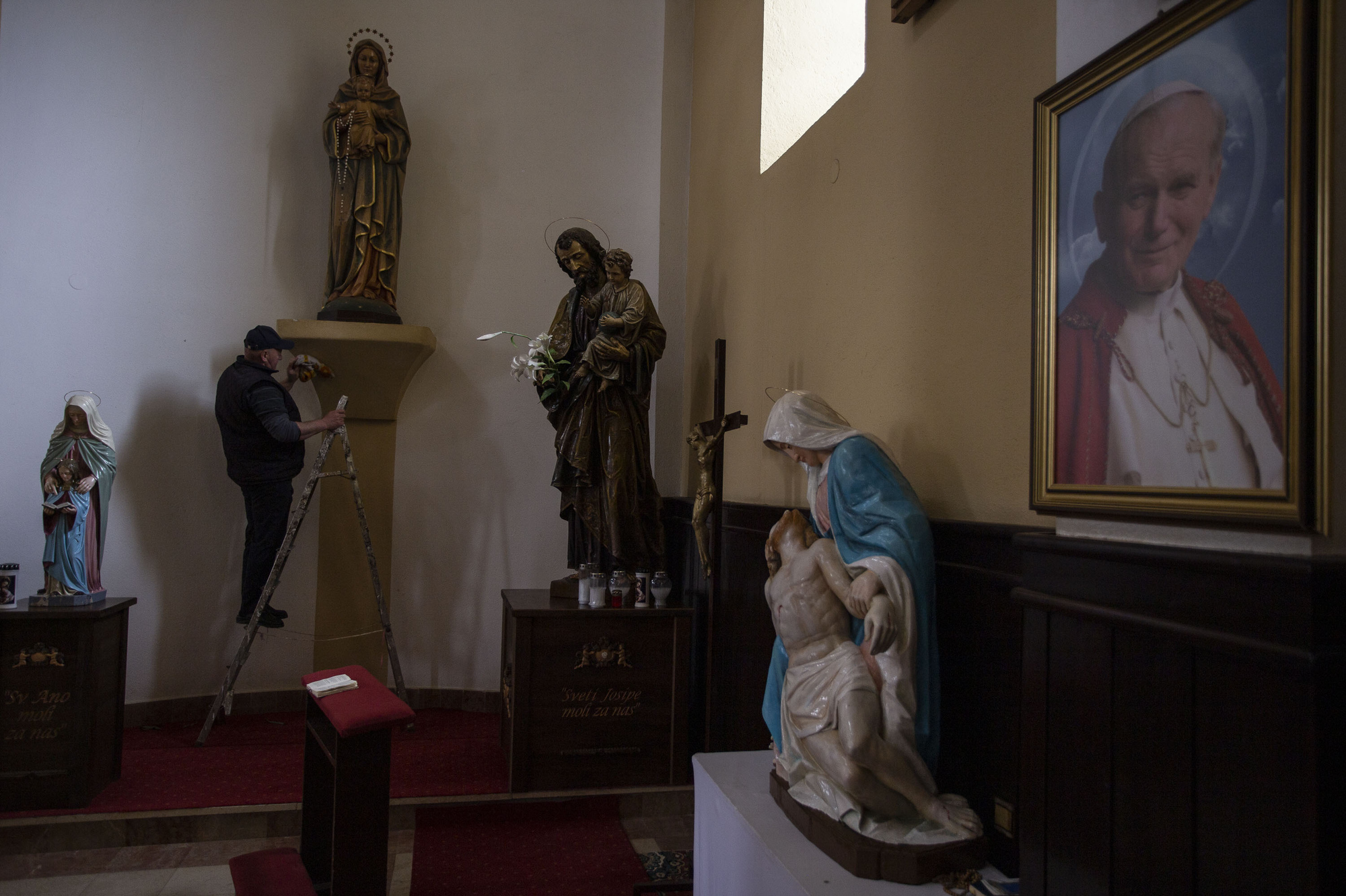
From May 1992 to May 1993, 10 convoys transported around 2,200 people. The Dutch researcher Ger Duijzings, much of whose academic work focuses on the Croats of Kosovo, writes that during his 1994 visit to Letnica he encountered merely 20 inhabited households, and a few others in the surrounding villages, and most were elderly people.
Although their invitation came from the highest rung of government, Kosovo’s Croats were not well received in Croatia. Those with family members in Croatia, mostly those from Janjevo, headed for Zagreb, where there has been a large Janjevo diaspora since the 1950s. The rest were sent to war-torn areas in Slavonija and to the hinterland of Knin, which Serbs were abandoning en masse at the same time, some heading for Kosovo, where Serbian authorities were awarding them abandoned houses, including those in villages around Letnica and Janjevo. Back then, the Split-based independent daily Feral Tribune described the process as “demographic engineering,” claiming that the leaders of Croatia and Serbia had agreed on such a plan.
Although they were promised documents, the Croats arriving from Kosovo didn’t immediately receive them and many lived for years in abandoned, often damaged homes of Serbs who had fled.
It was only in 1995 that the government started awarding them citizenship, which meant automatic access to social welfare, health care and the labor market. And although authorities promised to build them new homes, some stayed in the homes of displaced Serbs for years. In one case in the village Dumače, some approximately 200 people from Letnica only received keys for their promised new houses in April 2017. In these semi-deserted and demolished places, they were joined by Croats from Vojvodina and Bosnia and Herzegovina, who also arrived thanks to the invitation from the government in Zagreb.
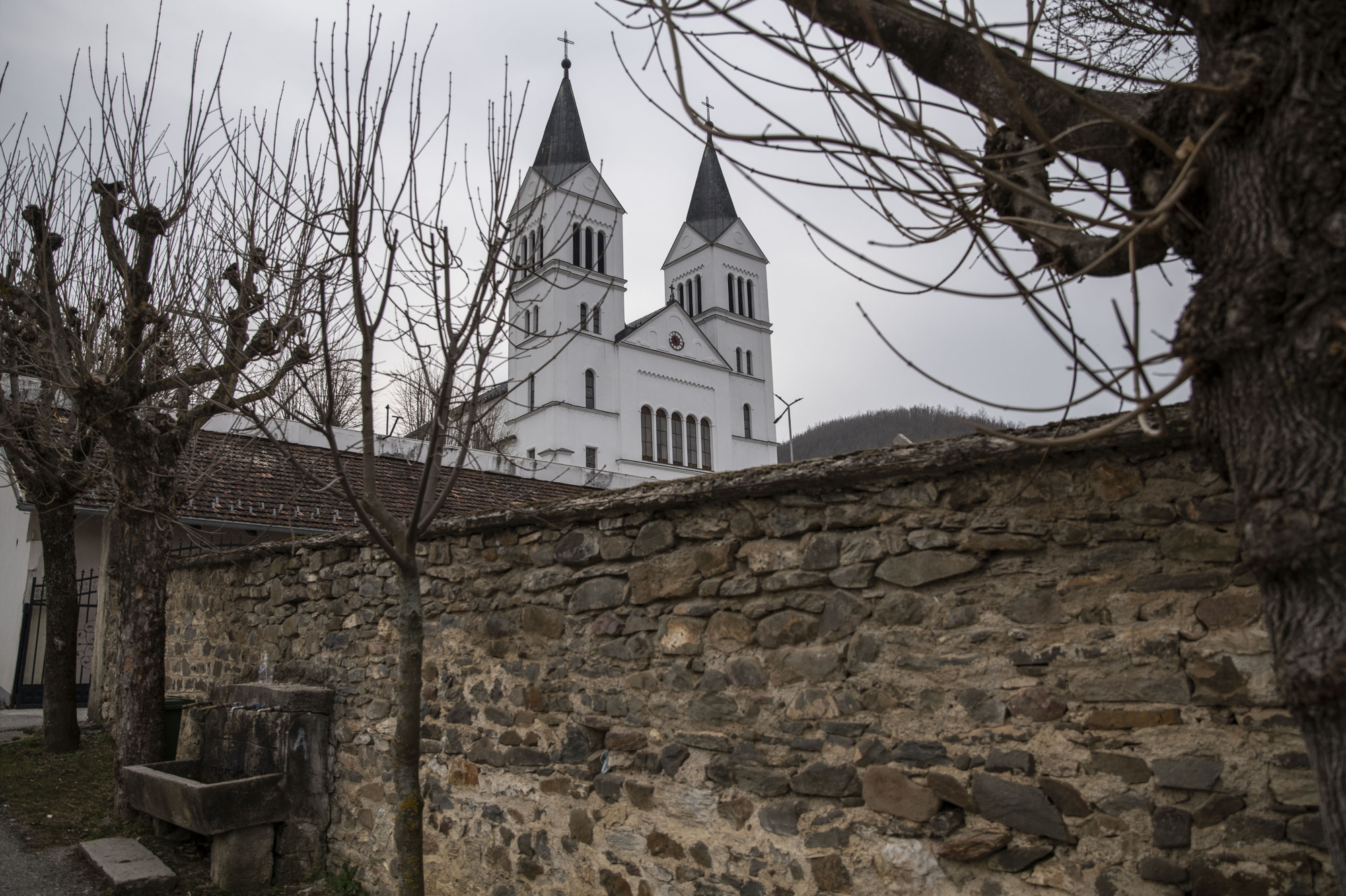
The localities where the Croats from Kosovo live are some of the poorest municipalities in Croatia, with high unemployment and a large number of people forced to rely on social welfare. As in Kosovo, much of the youth decide to leave and join the large wave of those migrating to other countries.
And there are still problems with relations with the communities originally from these villages, which to this day don’t fully accept their new neighbors. But the politicians’ goals have been achieved and today these areas are predominantly populated by Croats.
Staying on
The Croats who left Kosovo have brought with them part of the cultural heritage of the country — language and culture. Today in Croatia there are several associations that gather together people from Janjevo and Letnica, and for a number of years there has been a yearly event in Zagreb that tries to help preserve the unique local dialects.
With fewer and fewer people in both towns, these dialects are increasingly rare in Kosovo itself. At the same time, Croat and Roma children in Janjevo attend a school that uses the Serbian curriculum, while there are no longer any Croat children in Letnica.
The Kosovo Croat community decided to enroll their children in the Serbian curriculum after considering the Albanian, Bosnian and Serbian-language programs available in Kosovo. The reason for this is simple survival. The Serbian authorities offer everyone in their school system in Kosovo a monthly scholarship, including free textbooks and school supplies. Kids who attend secondary school in line with the Serbian curriculum also receive scholarships. For many families, this is a source of income that makes their survival possible.
The school in Janjevo used to have more than 3,000 pupils. Today there are fewer than 300, including 14 Croats and 36 Roma. Teachers say that the number of children in schools, of all ethnicities, is fewer and fewer every month.
On the first floor of the school in Janjevo children attend classes in Albanian, while on the second floor are the classes in Serbian. The school has two directors and separate teaching staff. This year, only four Croat children have enrolled in the first grade. All children enter the building through the same entrance, where they are welcomed by a colorful rug and a wooden shoe rack. Both floors appear to have seen better days and the feeling when entering the school is like going into the past, at least 30 years back if not more.

The future is happening outside, in the schoolyard, where the children from both floors play together and learn each other’s languages and about one another.
Attending classes in the Serbian curriculum creates hurdles for Croat students down the road. It would be difficult to continue their education in Kosovo because even when they speak Albanian, it usually isn’t at a level that is sufficient for academics and the Serbian diplomas they receive aren’t valid in Kosovo. Before they head to Croatia they have to master the standard variant of Croatian and verify their diplomas, so Serbia becomes their only option, or going far from the Balkans.
When asked about whose curriculum they use to teach history, one of the teachers said that most often they don’t teach history classes because it is difficult to answer questions about the war and everything that happened where they live. “It is hard to teach about that and to know what to say to the children,” she said, adding that the kids don’t even ask about it.
Another question that the teachers don’t have an answer to is what type of future awaits those who decide to stay in Janjevo. “There’s no future here,” said one of the teachers on the second floor. “People are leaving every day.”
In both Letnica and Janjevo, you can hear the sorrow in people’s voices. They’re aware that there will soon be no life left in either town. “Everyone’s going,” said Don Mateo. “Nobody’s doing well here and nobody is trying to make anything better.”
Feature image: Ferdi Limani / K2.0.
![]()
![]()
This article has been produced with the financial support of the “Balkan Trust for Democracy,” a project of the German Marshall Fund of the United States and the Norwegian Ministry of Foreign Affairs. Opinions expressed in this article do not necessarily represent those of the Norwegian Ministry of Foreign Affairs, the Balkan Trust for Democracy, the German Marshall Fund of the United States, or its partners.
Why do I see this disclaimer?
- This story was originally written in Serbian/Croatian/Bosnian.

